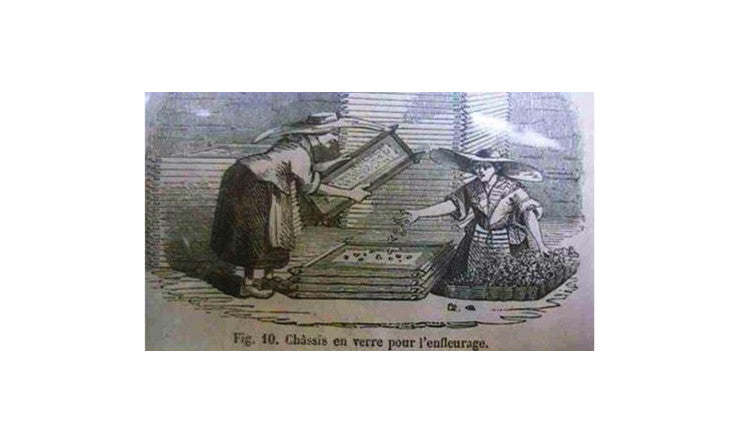The Notes that Define the Character of a Perfume
Citrus Notes
This family includes all fragrances made primarily from citrus fruits such as bergamot, lemon, orange, mandarin, and grapefruit. The fragrances in this family are characterized by their freshness and lightness. These are the first "Eaux de Cologne." The more masculine character of these fragrances is conveyed by the often significant presence of aromatic and spicy notes.
Aromatic Notes
Aromatics are composed mainly of sage, rosemary, thyme, and lavender, generally accompanied by citrus and spicy notes. The masculine character of these compositions makes this family a major asset in men's perfumery.
Green Notes
Green notes correspond to natural fragrances, fresh leaves, cut stems, grass, morning dew... In short, they are all plant and spring scents. The raw materials used to recreate green notes are often absolutes, derived from flowers or leaves, buds or plant roots. The most commonly used note is galbanum.
Fruity Notes
Very popular in perfumery, fruity notes give perfumes originality, modernity and freshness.
Floral Notes
Floral notes are arguably the most important. They encompass all perfumes whose main theme is flowers. Perfume designers have created unforgettable creations using this olfactory family. We love the floral scent for its natural and feminine feel.
Woody Notes
The woody olfactory family is composed of aromas and essences extracted from wood and tree mosses. Woody fragrances are synonymous with luxury. They are suitable for elegant, characterful, and primarily masculine individuals, generally representing a certain maturity.
Amber Notes
Also known as oriental, this is a warm and powdery essence, often with vanilla accents. Amber perfumes are famous for their warm and sweet notes that leave an unforgettable impression. Amber juices are often very sensual and seductive. In fact, orientals once attributed aphrodisiac properties to ambergris. Today, the family of amber essences includes sweet, balsamic scents, often made up of an abundance of vanilla. Spices are also very often included in this olfactory category.
Spicy Notes
Spices assert the fragrance's personality by adding warmth and depth. Spicy fragrances create a distinguished, intense, and vibrant style. Perfumes with spicy notes contain warm, captivating, and even impertinent tones. In the world of fragrances, spices are sure to awaken our sense of smell and taste buds.
The composition of the perfume
Regardless of the manufacturing technique used, the composition of a perfume is usually described in the same way. Indeed, not all raw materials have the same evaporation rate. Some of them are very incisive and last only a few minutes. Others are more perceptible and constitute the center of the olfactory recipe. Finally, some raw materials are used more to increase the tenacity of perfumes. To describe the recipe of a fragrance, it is therefore customary to speak of top notes, middle notes, and base notes.
The top notes of a perfume
Top notes are the most volatile part of fragrances. These are the scents that begin immediately after a perfume is sprayed. Most often, they are a fresh, green scent, which begins to evaporate after half an hour to a maximum of one hour. Generally, top notes in perfumes consist of citrus, aromatic notes, green, and fresh scents.
The heart notes of a perfume
Heart notes, on the other hand, last for several hours and constitute the characteristic scent of a perfume. These are the notes that give a recipe its personality and are perceived for several hours. Generally speaking, these are floral, fruity, or spicy scents.
The base notes of a perfume
Finally, base notes evaporate the slowest. Sometimes, it takes several days for them to evaporate. Their main function is to lock in the fragrance to make it last as long as possible. These are most commonly woody, sweet, and spicy notes. Balsams, wood, moss, amber, and vanilla are key ingredients in this category.
Know that the more prominent the top note of a perfume, the fresher and more evanescent the result will be. Conversely, the more prominent the base notes, the richer and more opulent the fragrance will be.

Enfleurage: Used since ancient times, enfleurage is now abandoned because it is too expensive. This process is now only practiced for a few very fragile flowers such as jasmine, rose and orange blossom.
Perfume, eau de toilette, eau fraîche and eau de cologne: what’s the difference?
· The perfume extract contains up to 40% concentrate in 96° alcohol.
· Eau de parfum contains between 12 and 15% of concentrate in 90° alcohol.
· Eau de toilette consists of 8 to 12% concentrate in 85° alcohol.
· Fresh water, a concentration of 5% in 70° alcohol.
· Cologne, a concentration between 2 and 5% in an alcohol ranging from 60 to 90°.
A perfume is based on three constituents, each with a specific function. It is composed of:
• a concentrated odorous part (mixture of essential oils, absolutes, concretes, etc.), often called "perfuming"
• a support (alcohol, oil, balm)
• and possibly a fixative which serves to leave the scent of the perfume even longer. However, it is often the base notes which serve as a fixative.




































































Leave a comment